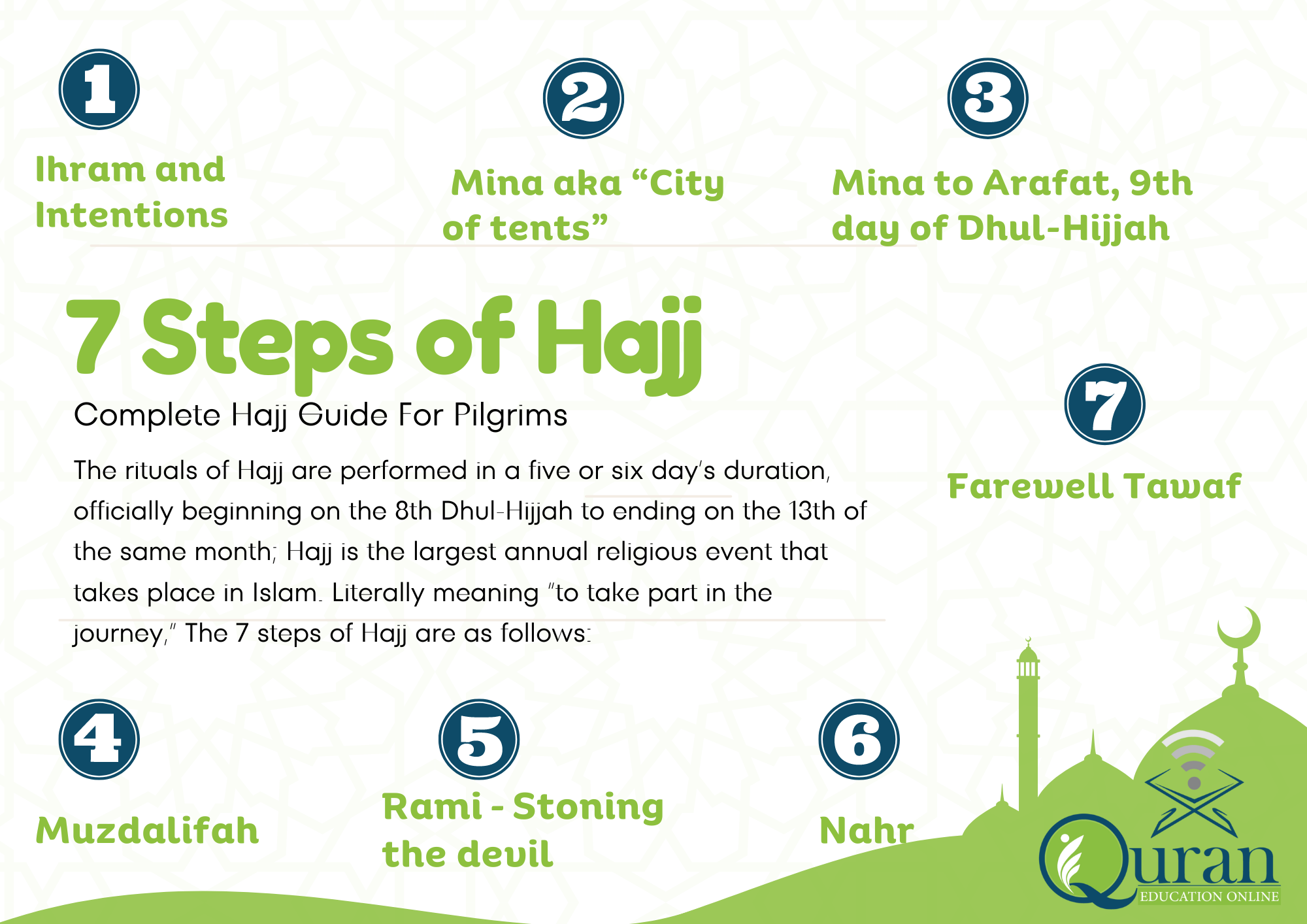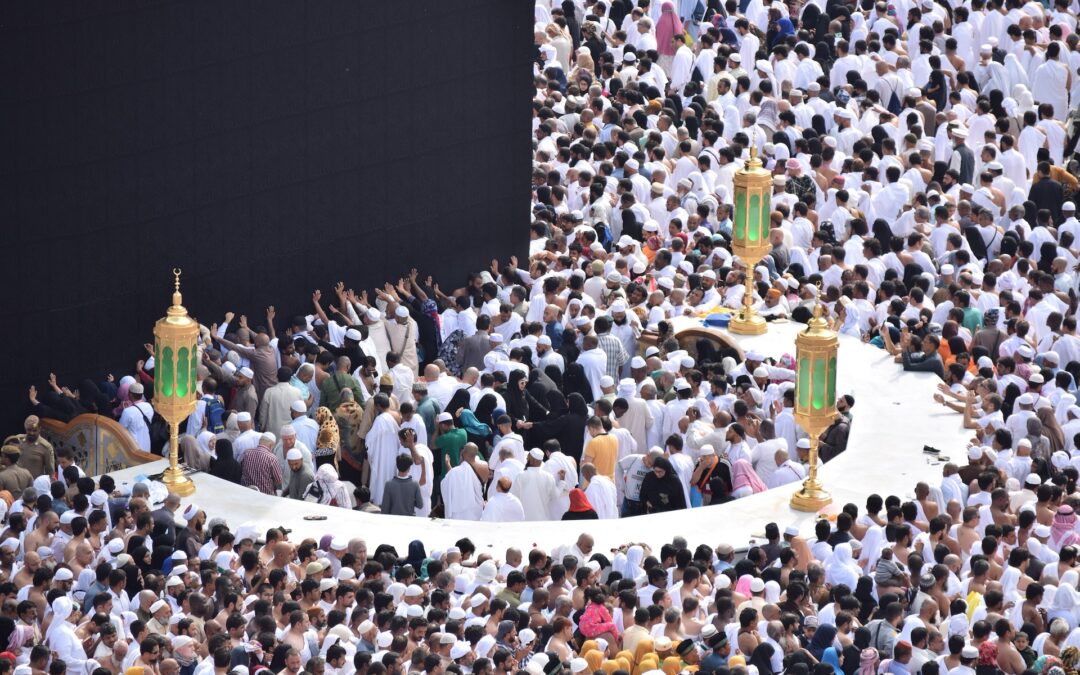Hajj Step by Step Introduction:
Welcome to our comprehensive guide on the rituals of Hajj, the sacred pilgrimage in Islam. Hajj is a mandatory duty for all able-bodied Muslims who can afford it and holds immense significance. In this article, we will explore the step-by-step process of performing Hajj, ensuring a fulfilling and meaningful experience. Let’s begin with the rituals of this profound spiritual journey.

-
Hajj Step by Step: Ihram
The State of Purity and Intention: The first step of Hajj is entering the state of ihram, a sacred state of purity and intention. Men dress in seamless white garments, while women wear loose-fitting, modest attire. Pilgrims express their readiness and devotion to embark on this spiritual journey through the recitation of the Talbiyah. Listen Here
-
Hajj Step by Step: Tawaf
Circumambulation of the Kaaba: Upon reaching the holy city of Mecca, pilgrims perform Tawaf, which involves circling the Kaaba, the sacred House of Allah, seven times counterclockwise. The Tawaf starts and ends at the Hajr al-Aswad (Black Stone). Pilgrims aim to touch or kiss the Black Stone as a symbol of unity and humility before God.
-
Sa’i:
Walking between Safa and Marwa: After completing Tawaf, pilgrims proceed to perform Sa’i. This ritual involves walking seven times between the hills of Safa and Marwa, following the footsteps of Hajar (Hagar), the wife of Prophet Ibrahim (Abraham). It commemorates her search for water and emphasizes perseverance and trust in God’s providence.
-
Wuquf at Arafat:
The Pinnacle of Hajj: The most crucial ritual of Hajj takes place on the 9th day of the Islamic month of Dhul Hijjah, at the plain of Arafat. Pilgrims gather from dawn until sunset, engaging in supplications, prayers, and seeking forgiveness from God. Wuquf symbolizes the Day of Judgment and is considered the pinnacle of Hajj.
-
Muzdalifah and Mina:
The Stoning of the Devil: After leaving Arafat, pilgrims head towards Muzdalifah, where they spend the night under the open sky, engaging in prayer and reflection. The next day, they proceed to Mina, where the symbolic stoning of the Devil takes place by throwing pebbles at three pillars. This act symbolizes defiance against evil temptations.
-
Farewell Tawaf:
Bid Farewell to the Kaaba: Upon completing the stoning of the Devil, pilgrims return to Mecca to perform the Farewell Tawaf. This final circumambulation marks the end of Hajj and signifies bidding farewell to the Kaaba, with the hope of a purified soul and acceptance of the pilgrimage.
Conclusion
Embarking on the pilgrimage of Hajj is a transformative and spiritually enriching experience for Muslims worldwide. By following the step-by-step rituals of Hajj, individuals can fulfill their religious obligations and seek closeness to God. Remember, the true essence of Hajj lies in the sincerity of intentions and the quest for self-improvement. May your journey be blessed and accepted.

